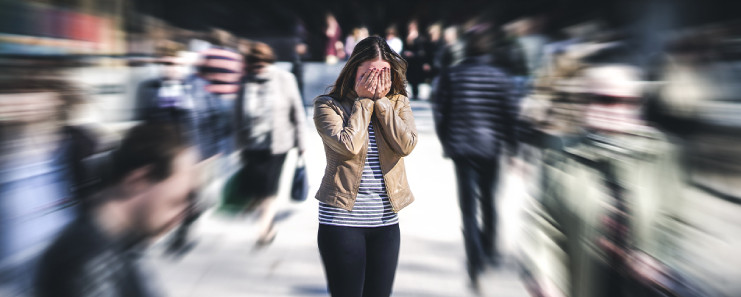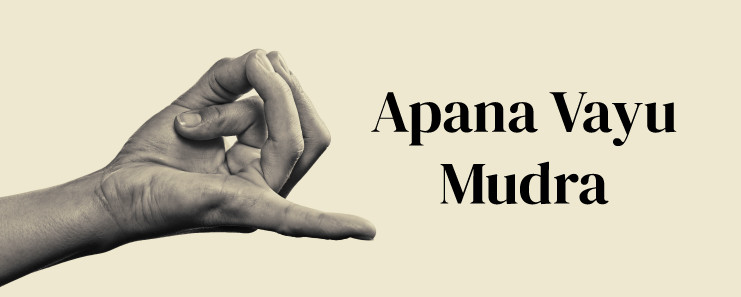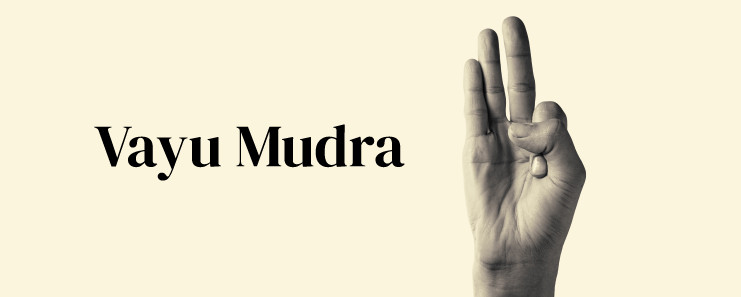In the middle of a work day, a dear friend texted me saying that she was having a panic attack. Unable to understand what to do next, I tried to call her. She did not respond. I texted her multiple times. But I got nothing. Later, I frantically texted her: why on earth are you not responding?
“You can’t expect a response from someone going through what I was going through,” was her reply. I realized my concern for her could not help her since I had no real knowledge on the subject myself.
According to a recent survey by the Indian Psychiatric Society, there has been a sudden rise in those suffering from mental illness, which has gone up to 20 percent since the coronavirus outbreak in the country. According to the survey, one in every five Indians is suffering from a mental illness. Doctors report that the lockdown has had a severe impact on the lifestyle of people. Many are suffering from anxiety and panic disorders.
So what is a panic attack and a panic disorder?

A panic attack involves sudden and overwhelming fear, accompanied by a racing heart and breathlessness. Panic attacks are primarily caused by stress or an existing mental health condition or are triggered by the memory of a past discomforting incident. Frequent panic attacks are characterized by a panic disorder.
The overwhelming terror of a panic attack can be accompanied by the following symptoms too:
- Weakness, dizziness
- Numbness in the hands
- Feeling of terror, or impending doom or death
- Fear of loss of control
- Sweating
- Trembling or shaking
- Shortness of breath or tightness in the throat
- Chills
- Hot flashes
- Nausea
- Abdominal cramping
- Chest pain
- Headache
- Feeling lost
What had caused the panic attack for my friend was a recent incident. She had lost a close acquaintance to Covid. The image of the body, retrieved from the hospital, had sent a chill down her spine the day she had heard the news. She had had her first panic attack the following week. Since then, she had been having the attacks on a regular basis. With professional guidance and a few scientific and time-tested measures, she is now recovering. However, after the first few attacks, she had been scared. She had wondered in fear if her life would ever be as it had been before. I pointed out that this fear would only invite more panic. It would be better to have faith in the healing journey.
For my friend, the first step towards healing was knowing how to deal with a panic attack. Here are the steps that anyone going through a panic attack must follow.
Recognize: Know when you are having a panic attack. Do not be in denial. The overwhelming fear combined with one or more mentioned symptoms ascertains that it is one.
Remember: Remind yourself that it is temporary and not fatal. The thought of it never ending worsens the attack.
Accept: Do not resist. ‘This should not be happening to me.’ ‘What will people around me think?’ ‘I wish I could stop this,’ are all thoughts that could lead you to resist your panic attack. Accept what you are going through.
Shut off: Close your eyes for some time. This will help block out any external or extra stimuli and give an opportunity to calm down.
Observe: Every emotion creates a corresponding breathing pattern and sensation in the body. Pay attention to your breath, and the body’s sensation. Most likely, you will experience an intense sensation between the navel and throat.
Take deep breaths: By regulating the breath, you can regulate your mind.
Form a mudra: The Sanskrit word, mudra, is a simple hand position that adjusts the flow of energy in the body. Mudras combined with deep breaths facilitate healing.
Apana Vayu Mudra and Vayu Mudra are two mudras that can give relief during an attack. Please make a note of practicing the same mudra in both hands at a time. Practicing these mudras for 20- 30 minutes daily can also help reduce the attacks.
Apana Vayu Mudra
The tip of the index finger should be pressed lightly against the root of the thumb and the second and third fingers should touch the inner tip of the thumb.

Vayu Mudra
This mudra is formed by placing the tip of the index finger on the base of the thumb and then bringing gentle pressure of the thumb upon this finger.

Picture a happy place: Remember a happy moment or place. That will soothe the mind.

Know when to see the doctor: If you are experiencing a painful symptom that you have never experienced before, say for instance chest pain, then consult a doctor immediately. That’s the best way to rule out any other serious health conditions.
5 Life-changing habits that can help avoid a panic attack
Knowing what to do when experiencing a panic attack was empowering for my friend. But what really made a difference were some powerful habits that reduced the intensity and frequency of her panic attacks. What did she do? Here are some practices.
A fixed routine and a change of diet
My friend, like most millennials stuck during the lockdown, juggles between a million office tasks and ten million household chores. Balancing between the two was a constant struggle for her. So, she began to shift her office tasks late into the night. Soon, there was no routine for her. Meals became untimely, so did her sleeping and working hours. According to Ayurveda, no routine aggravates bodily imbalances leading to increased chances of anxiety and panic attacks. Her panic attacks became a wake-up call for her to tend to her disturbed routine and diet. She gradually went back to her old routine of waking up, sleeping, and having meals at fixed hours. She also adopted simple Ayurvedic diet tips and practices.
Yoga
A study by IIT Delhi shows that yoga practitioners experience better mental health compared to non-practitioners during 4-10 weeks of the Covid-19 lockdown. The former group reported lower stress, anxiety levels, and higher well-being and peace of mind. After a few weeks of regular yoga practice with a teacher, online, my friend immediately felt the difference too. You too can start your yoga journey. Here are some of the yoga asanas that helped her the most:
Breathing exercises
“Breath is linked to emotions. Through breathing exercises, one can control their emotions and have a batter say over their minds,” says Gurudev Sri Sri Ravi Shankar. This is something my friend realized when she started taking long deep breaths during a panic attack. She later told me that the breathing exercises taught in her yoga class had an even more profound impact on her state of mind and the panic attacks. The most powerful breathing exercise that helped her immensely was Nadi Shodhan Pranayama. Whenever she was too busy for her whole yoga routine, five minutes of Nadi Shodhan helped her set the day.
Meditation
My friend often wished out aloud to me: only if she could silence her mind. Apparently, her mind ran disturbing hospital images of her friend’s death without her permission. Lately, her mind indulged in over-thinking and got triggered into feeling frightened easily, she complained. She understood that her panic attacks were not just a result of what was happening; a major contribution to her suffering was her own mind. She found a way to master her mind with breathing exercises and meditation.

Meditation helps you accept thoughts so that they can comfortably settle with their own mind. Studies show that the practice activates the relaxation response in the body and calms the mind. She started with guided meditations and learned a meditation technique too.
Help people
The most transformational habit that my friend adopted since the advent of her panic attacks was to consciously be helpful and reach out to people. Be it through a prayer, an online volunteer activity, a donation, or just a simple act of kindness of helping her roommate with the dishes. Apparently, studies show that those who help others often - whether through formal volunteering or providing informal help - reported higher positive emotions. Another study shows that anxiety is linked to a status of self-focus, a preoccupation with ‘me, myself and I’. When you reach out to others, naturally your focus shifts.
Gurudev Sri Sri Ravi Shankar has long advocated the benefits of reaching out. In an Ashtavakra Gita commentary, he has said, “If you make yourself available for the entire humanity, you will become fearless. Service is that inner state where you say, ‘You need me, I am here, available for you’.”
Overstep overthinking
Yes. My friend did the seemingly impossible task of overstepping her habit of overthinking by listening to music, undertaking physical activities, and taking cold water showers. She also limited her media exposure that usually led her into a vortex of worrying about her loved ones.
Wisdom that can accelerate your healing journey
Wisdom from Gurudev Sri Sri Ravi Shankar also helped my friend in her healing journey. In her words, “His wisdom helped me find my own strength, the way a strong tree finds support in his roots amidst a storm and manages to float with the wind rather than breaking because of it.” Two wisdom points that helped her immensely:
Know everything is changing
The Covid situation will end. There will be a time when it will be okay to not wear a mask and breathe the air on the beach, the mountain, and the busy jammed roads of New Delhi. That day will come. This and all other tragic and happy events in your life are nothing but phases, just like uncomfortable adolescence. When you see this truth, the impermanence in everything, fear starts to slip away.
Know that the universe cares
Have faith in a higher power. Call it anything - the universe, God, nature. Know that a higher power is taking care of you. Otherwise, there is no way you could be reading this article!

Based on Gurudev Sri Sri Ravi Shankar’s knowledge sheets and inputs from Dr. Prema Seshadri, Faculty, The Art of Living
Written by: Vanditaa Kothari

